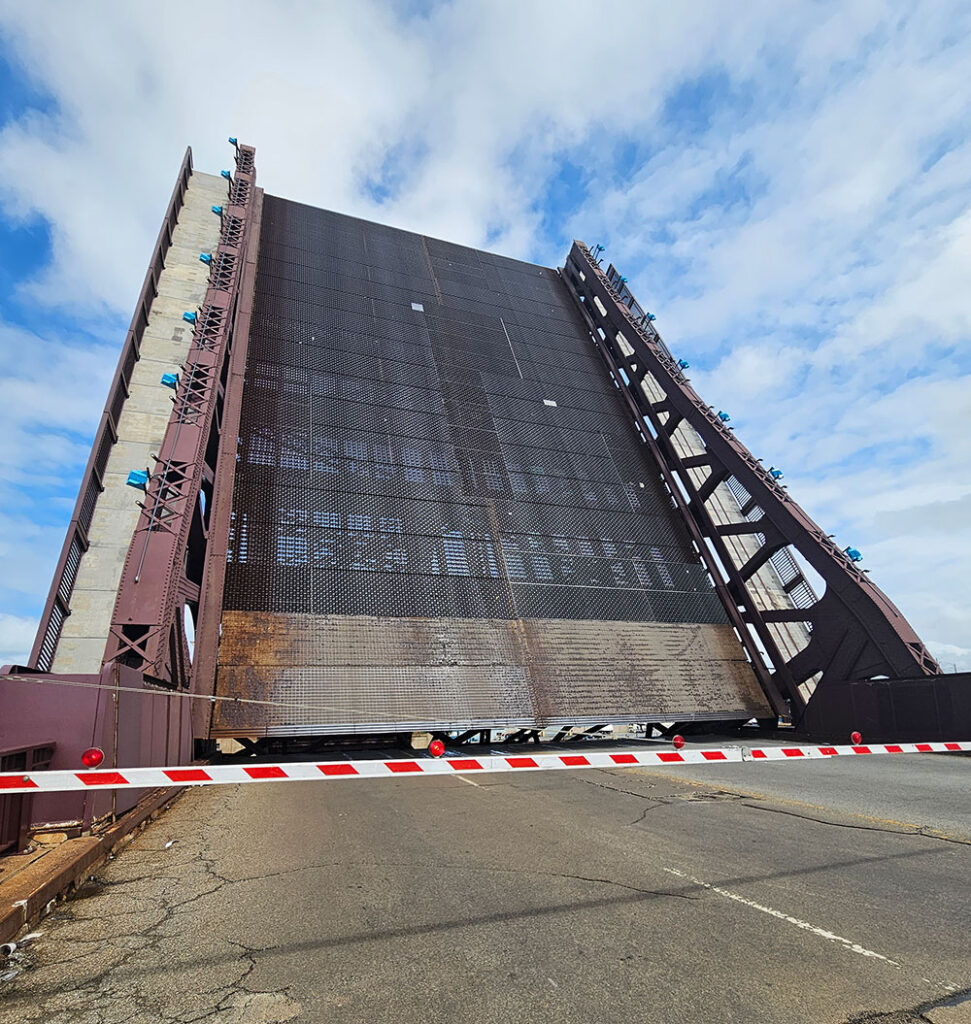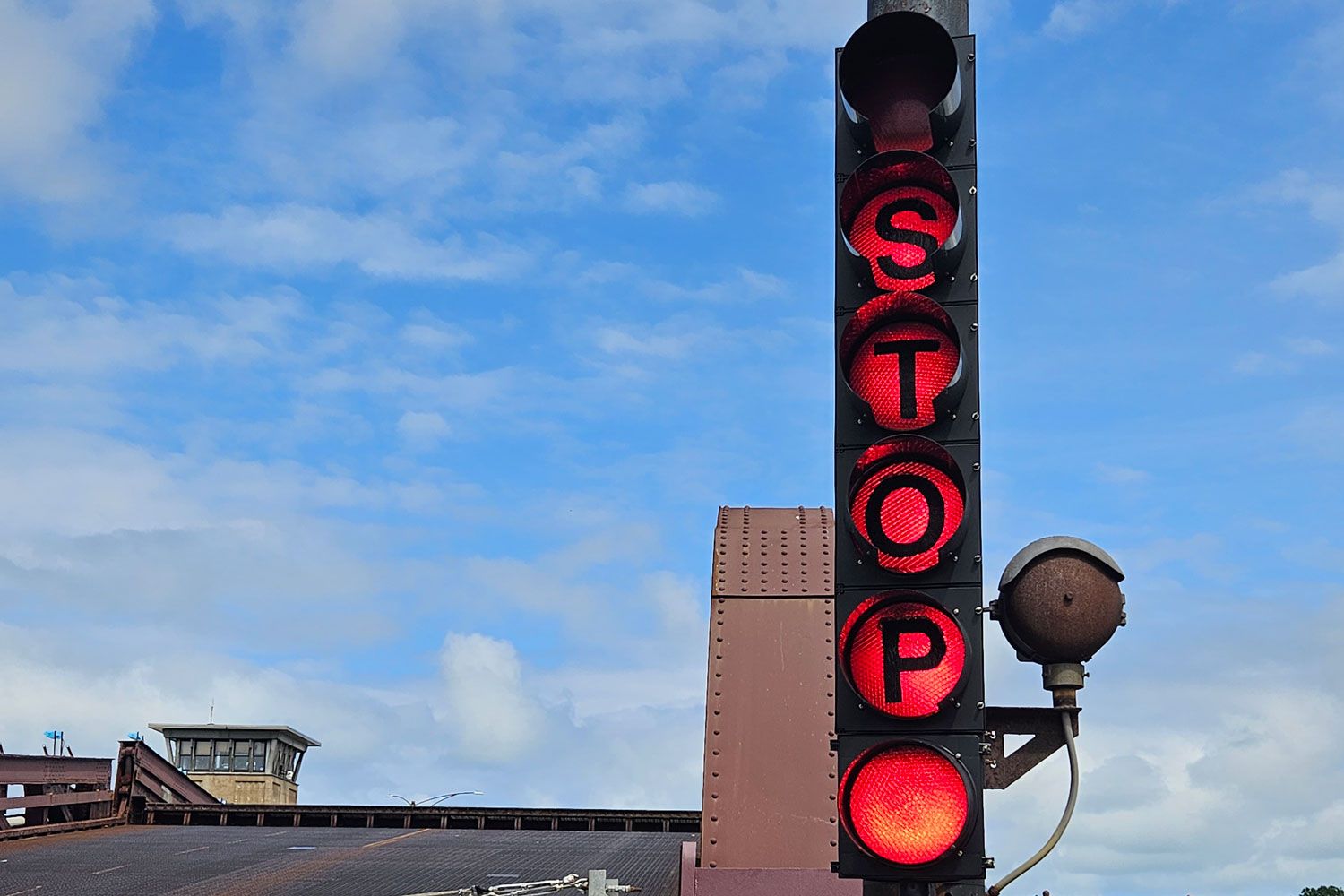Chicago has more movable bridges than any city in the world — 37 in all. The most famous lift bridge in the city — maybe in the world — spans the Calumet River at 95th Street. That’s the bridge the Bluesmobile jumped in an opening scene of The Blues Brothers, setting the tone for two hours of automobile stunts and crashes.
I love the 95th Street bridge for another reason: It’s the best place in the city to watch boats. As Chicago’s port, the Calumet River is a thoroughfare for freighters, not just from all over the Great Lakes, but all over the world. In the old days, when bulk carriers brought iron ore to the steel mills of South Chicago, the Daily Calumet published the shipping schedule on its front page. Both the Daily Cal and the mills shut down in the 1980s. Now, there’s an app, MarineTraffic, which identifies the location of every boat on every waterway in the world.
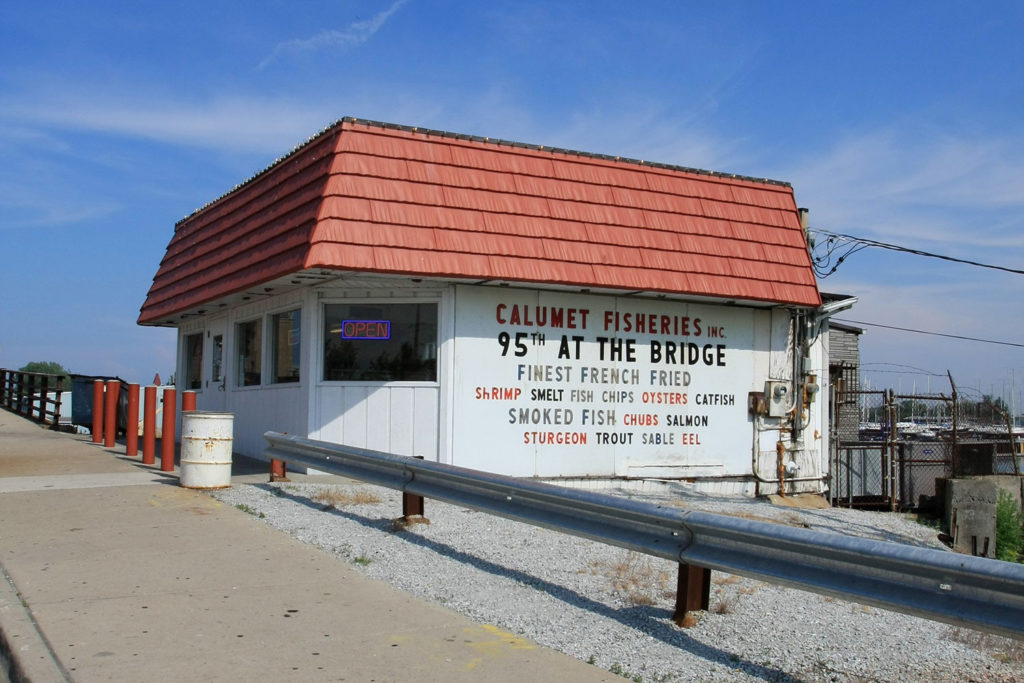
According to MarineTraffic, the Calumet, a 630-foot-long freighter, was on the Calumet River Saturday morning. I wanted to see it. Before I could search for the Calumet, though, I had to stop at Calumet Fisheries, the cash-only, take-out-only fish shack that gives its address as “95th at the Bridge” and its specialties as “Finest French Fried Shrimp Smelt Fish Chips Oysters Catfish Smoked Fish Chubs Salmon Sturgeon Trout Sable Eel.” Because of its remoteness, and because it’s a remnant of South Chicago’s nautical heyday, with a menu little changed since 1948, the red-roofed Calumet Fisheries is probably the most Instagrammed restaurant in Chicago. Winner of a James Beard Award, featured on Anthony Bourdain’s No Reservations, Calumet Fisheries draws a cosmopolitan crowd to what is now a Latino neighborhood. Its worldwide fame makes up for the loss of business from the steel mills.
“We used to be open 17 hours a day, 18 hours a day,” a Calumet Fisheries manager once told me. “It happened gradually, as the mills declined. I used to employ 17 or 18 people. Now I’m lucky to get seven.”
(That same manager remembered watching the Bluesmobile jump the half-opened bridge: “They came from 95th and Commercial. Seventy, seventy-five miles an hour. They actually had a ramp onto the bridge. They went right over in that junky car.”)
I ordered half a pound of salmon, from the smokehouse on the riverbank, and a half order of fries. According to my app, the Calumet was moored just south of the 100th Street bridge. I crossed over to the East Side, eating from the bag as I walked. I found the Calumet at the Morton’s Salt dock and waited on the bridge until a sailor appeared out of a door in the stern.
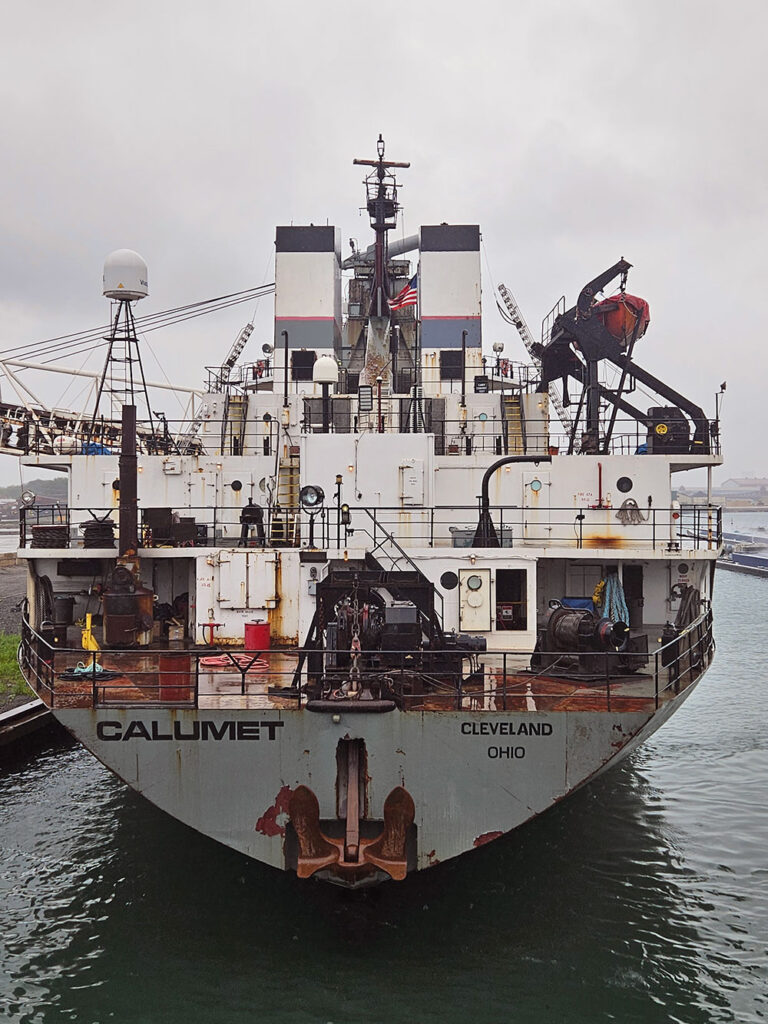
“What are you hauling?” I called out.
“Salt,” he replied.
“From where?”
“Detroit.”
This is the second Great Lakes freighter named Calumet. I went aboard the first Calumet in 2005, in Cleveland, when I was researching The Third Coast, a travelogue of a 10,000-mile journey around the Great Lakes. That Calumet was built in 1929, and was only two years from being scrapped. It was also hauling salt, the last detail of an ancient freighter. This Calumet, which took on the retired boat’s name, was built in 1973 by George Steinbrenner’s American Steamship Company and was ruddy with rust, due to its age and its corrosive cargo.
When I got back to 95th Street, Anthony Caciopo was sitting outside Calumet Fisheries with two friends, eating smelt and drinking Modelo from a cooler. Like me, they were hoping to see a boat go under the bridge.
“I can’t think of a time I’ve been here when there hasn’t been a bridge lift,” Caciopo said.
I waited. I watched. I could see the Calumet’s boom, but it didn’t move. Maybe not today. I’d seen other boats pass under this bridge. I once took a voyage on the Joseph L. Block, from East Chicago, Indiana, to Escanaba, Michigan, to pick up taconite for the ArcelorMittal mill. After the Block discharged its cargo, the boat sailed up the Calumet River for a load of coal. I followed it there in my car. From the bridge, I was close enough to recognize sailors I had just spent three days with.
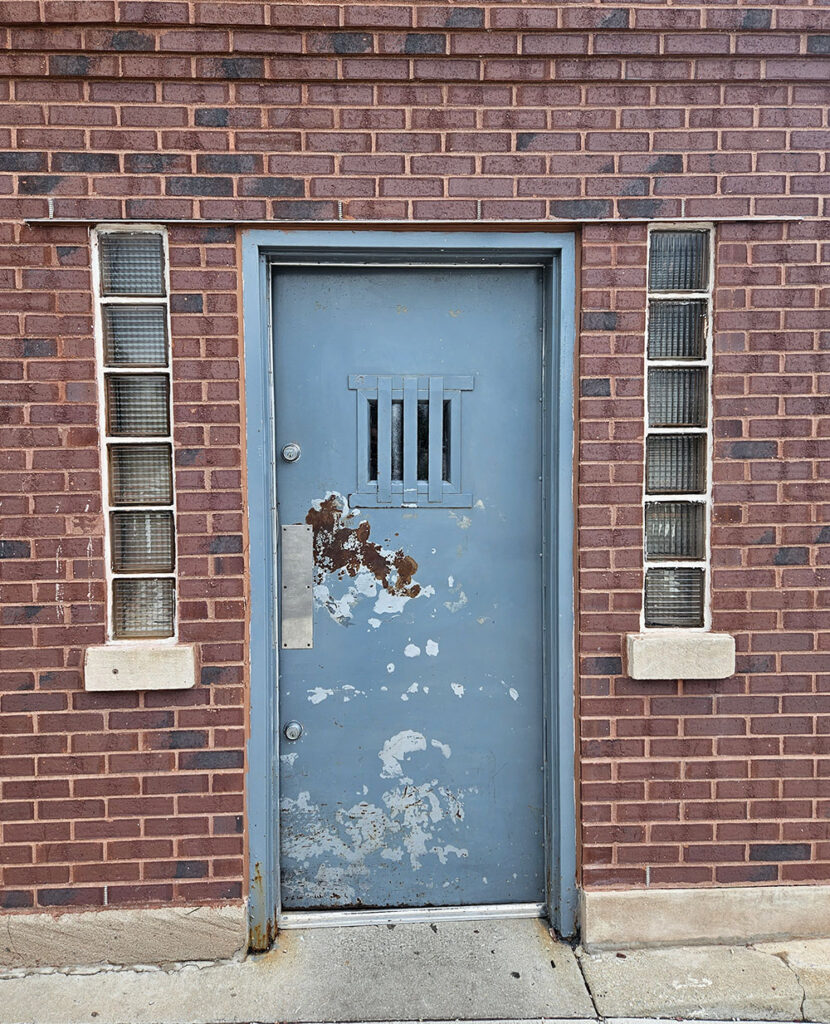
I walked back to the South Chicago station to catch the train. I had just enough time for a beer at Loncar’s on 92nd. To drink at Loncar’s, an old steelworker’s bar, you have to know Loncar’s is there, because the bar does not advertise its existence. (“We had a sign,” a bartender explained, “but they took it down to do some brickwork and never put it back. All the regulars in the neighborhood know about us.”) While sitting at the bar, I checked MarineTraffic. A boat was moving on the Calumet River! I finished my Modelo and hurried back to the bridge.
The boat was not the Calumet. It was Maggie Rae, a tug. First, the old railroad bridge rose so the tug could pass under. Then…bells clanged, sirens whooped, red-and-white striped gates dropped, and four vertical letters – S-T-O-P – lit up. The decks of the bridge yawned backward until they stood fully erect, at an angle of at least 80 degrees. The Maggie Rae blasted her horn and slid through the gap. I tried to snap photos, but my view was blocked by a fence and the bridge. Still, I’d seen the show I’d come to see. Anthony and his friends were gone, but there were plenty of young people hanging out on the bridge, eating fried fish out of styrofoam trays. Sometimes, you get lucky. If not, there’s an app for that.
